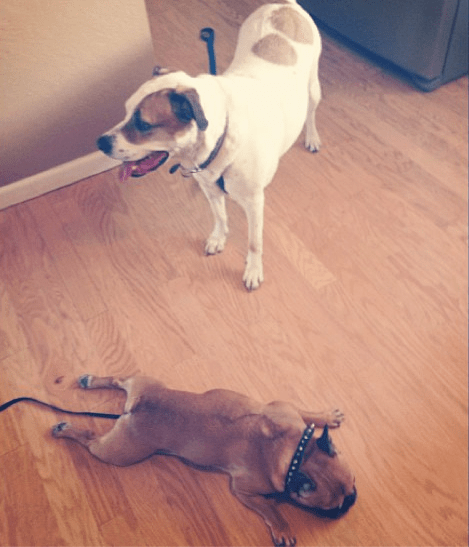Lauren from L Bee and the Money Tree wrote recently about how her dog, Murray, decided to take a little jaunt around the neighbourhood at 11pm in the middle of the rain storm, leaving her a nervous wreck until she found him. While this story ends well, it’s one we’ll all familiar with. I’ve been…

Lauren from L Bee and the Money Tree wrote recently about how her dog, Murray, decided to take a little jaunt around the neighbourhood at 11pm in the middle of the rain storm, leaving her a nervous wreck until she found him.
While this story ends well, it’s one we’ll all familiar with. I’ve been a victim of it myself. My dog Molly pulled the same trick on me last summer, except she was a full half mile away when she was found.
Dogs and cats disappear every day. Some estimate that 10 million are reported missing every year. If you own a pet, odds are, it’s going to give you the slip at some point in its life, and go missing. Hopefully your story will have the same happy ending mine and Lauren’s did, but to improve those odds, here are some ways you can keep your pet keep your pet from escaping, and help ensure it’s found quickly.
Secure Your Parameter
Many, many dogs will take any opportunity to go exploring their neighbourhood, and an open backyard gate the perfect temptation. To help protect against this possibility, install an automatic closing device on your gates to ensure that if they are left open for any reason, they’ll close on their own.
In addition to this, consider installing an underground electric fence, which will deter against fence digging and wandering out of an open gate. I have one installed around the parameter of my property, and my dog Molly has rarely wandered off. The cost of one of these fences can be as low as a few hundred dollars, and is money well spent. There are even options available for cats!
Register Your Pet
In most cities, dogs are required to be registered, and will receive an ID tag to attach to their collar. This ID tag will contain a ID number and toll free number to call. Anyone who finds a dog with an ID tag, will have a way of getting in contact with the owner.
One caveat to this method: Don’t forget to update your pet’s info when you move! Otherwise, your contact information will be out of date and the people who found your pet will have no way of getting in contact with you. Registrations are typically inexpensive, renewable yearly and often required by law.
Microchip Your Pet
This is a great option for both cats and dogs, and is widely available at your local vet’s office. Instead of an ID tag, the vet will insert a small microchip underneath your pet’s skin. The chip will be readable by a scanner that most vet’s offices and animal shelters are equipped with. This is particularly beneficial if a pet is found by animal control.
It also has the benefit of always being with your pet, even if they slip out of their collar and have no tags on them. As I mentioned above, don’t forget to update this information when you move! This isn’t typically expensive, it cost me $10 to have my dog Molly microchipped at the SPCA.
Have a “Go” Plan
Sometimes, despite your best intentions, your pet ends up missing. In these situations, having a plan in place to recover your pet could mean the difference between a few hours of searching and a few weeks. Have a “Lost Pet” poster prepared and saved on your computer, so that you can easily and quickly print out several posters to put up around the neighbourhood. Become acquainted with the local lost pets Facebook groups and message boards so you can quickly and easily get the word out to the local community. Finally, don’t forget to call your local shelter and vet’s offices with a description of your pet, in case animal control or a concerned citizen turns him or her in. By quickly publicizing the fact that you are looking for your pet, you increase the number of people keeping an eye out, thus increasing the chances your pet will be found.
No one likes to think about the fact that some day, you might be trudging the streets of your neighbourhood, calling your pet’s name. By taking these simple and inexpensive precautions you can minimize the chance of harm coming to your pet, and increase the odds of a happy ending to your pet’s adventure.
Have you ever lost a pet? I want to know!
